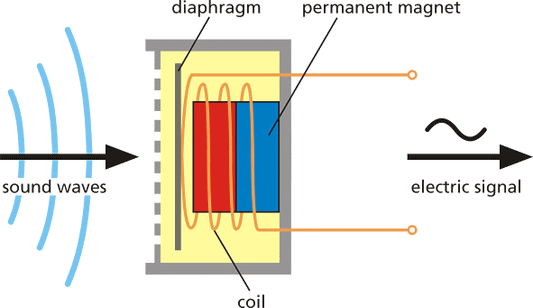Gear & Setup

1) Microphones Explained
Microphones are crucial tools for capturing audio, but with so many types of microphones available on the market, it can be overwhelming to choose the right one for your needs....
1) Microphones Explained
Microphones are crucial tools for capturing audio, but with so many types of microphones available on the market, it can be overwhelming to choose the right one for your needs....
2) Phantom Power
Phantom power is a vital part of the audio recording process for those who use condenser microphones. It involves sending a DC voltage through the microphone cable to power the...
2) Phantom Power
Phantom power is a vital part of the audio recording process for those who use condenser microphones. It involves sending a DC voltage through the microphone cable to power the...
3) Audio Interface
An Audio Interface is a crucial hardware device for any musician or producer looking to create professional-quality recordings in their home studio. Fidelity is a crucial factor when selecting an...
3) Audio Interface
An Audio Interface is a crucial hardware device for any musician or producer looking to create professional-quality recordings in their home studio. Fidelity is a crucial factor when selecting an...
4) Preamps and Pre-Preamps
Recording high-quality audio in a home studio requires a good preamp. Built-in preamps in Audio Interfaces are often not enough to produce professional-level sound quality and can cause digital noise...
4) Preamps and Pre-Preamps
Recording high-quality audio in a home studio requires a good preamp. Built-in preamps in Audio Interfaces are often not enough to produce professional-level sound quality and can cause digital noise...
5) Acoustic Treatment vs Soundproofing
It is essential to note that acoustic treatment and soundproofing are not interchangeable terms. Acoustic Treatment is designed to improve the sound quality within a room, while soundproofing is designed...
5) Acoustic Treatment vs Soundproofing
It is essential to note that acoustic treatment and soundproofing are not interchangeable terms. Acoustic Treatment is designed to improve the sound quality within a room, while soundproofing is designed...
6) VST's & MIDI (USB vs DIN)
MIDI equipment is an essential component of any home studio setup, allowing musicians and producers to control digital audio workstations and virtual instruments with greater precision and flexibility. MIDI keyboards...
6) VST's & MIDI (USB vs DIN)
MIDI equipment is an essential component of any home studio setup, allowing musicians and producers to control digital audio workstations and virtual instruments with greater precision and flexibility. MIDI keyboards...
7) Digital Audio Workstations (DAWs)
Digital Audio Workstations (DAWs) have become essential tools for modern music production, allowing musicians and producers to create, record, edit, and mix digital audio with ease. These software applications are...
7) Digital Audio Workstations (DAWs)
Digital Audio Workstations (DAWs) have become essential tools for modern music production, allowing musicians and producers to create, record, edit, and mix digital audio with ease. These software applications are...
8) Going DAW-less
The rise of digital audio workspaces (DAWs) has led to an abundance of virtual instruments and plugins at our fingertips, but it's easy to overlook the potential of hardware-based production....
8) Going DAW-less
The rise of digital audio workspaces (DAWs) has led to an abundance of virtual instruments and plugins at our fingertips, but it's easy to overlook the potential of hardware-based production....